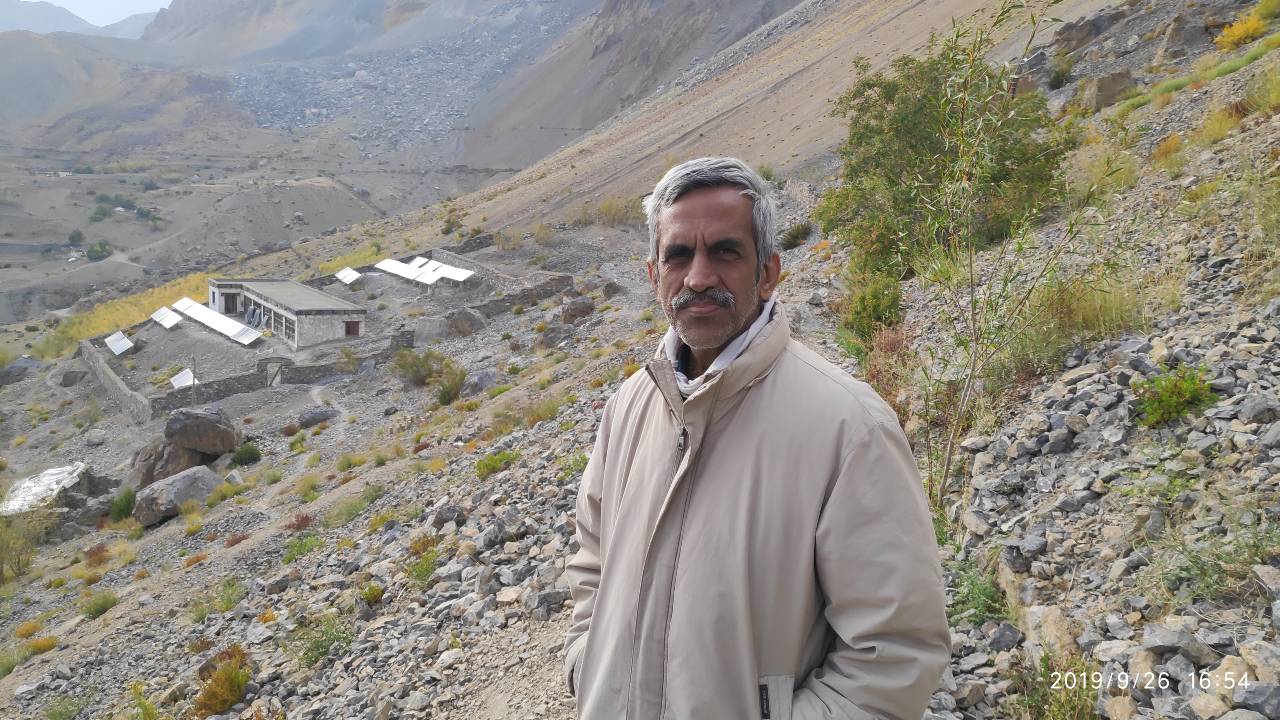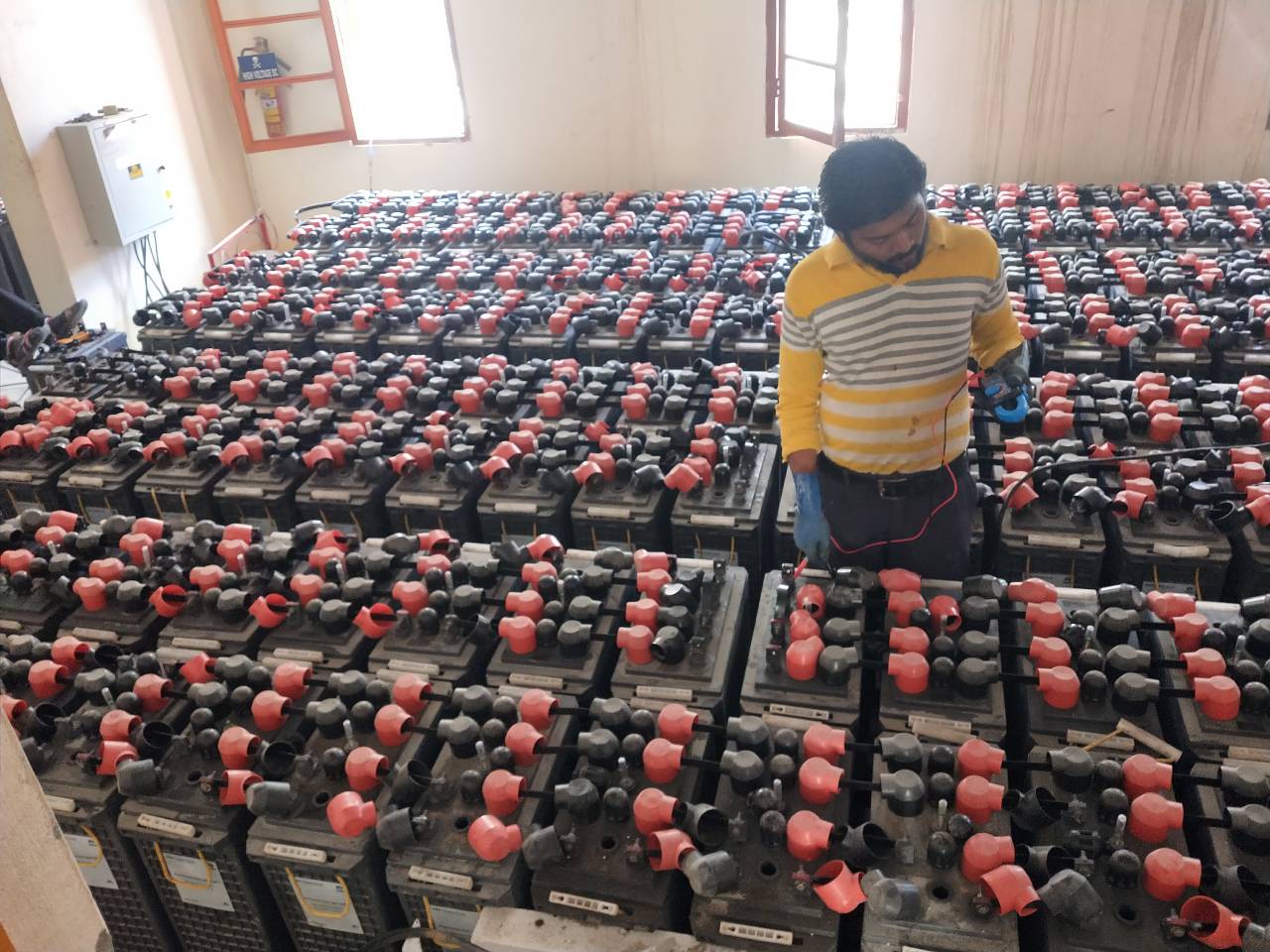Lead-acid batteries have been used in off-grid energy systems, such as solar energy systems, for decades. Just as how power banks store energy to charge your mobile phone, lead-acid batteries act as a power source for renewable energy.
Several reports suggest that the lead-acid battery market in India will grow to 8.31% by 2024. One of the reasons owing to this growth is the renewable energy sector because the energy generated is stored in a battery system. Another sector that uses a large number of batteries is the telecom sector which has up to 24 batteries attached to one network tower.
Yogendra Kainthola—an expert in the field of solar energy and battery systems and the founder of SunTerrain Eco Power Ltd in Thane—noticed one major set back.
“The lifespan of these lead-acid batteries in the market are low. They usually come with a one-year warranty but after a few months of usage, their performance reduces. When the user takes their batteries for servicing, most sellers never get back to them. This forces the user to either discard the battery or adjust them with the low-performing battery,” says Yogendra who conducted market research and spoke with battery users to notice this trend.
So, Yogendra spent many years researching how to revive dead lead-acid batteries and enhance their performance. By 2016, he developed a process and procured technology that can regenerate dead batteries within 48 hours. What’s more? To provide his services in the remotest villages in India where renewable energy is prevalent, he ensured his system was portable.

Till date, he has revived over 4500 lead-acid batteries and his project was Proof of Concept service for Ladakh Renewable Energy Development Agency in 2017.
“Crossing tricky terrain and climbing several feet above sea level, we were able to regenerate 800 batteries for the department. After our regeneration service, the batteries have shown satisfactory performance for two years,” says Yogendra.
What goes into battery regeneration?
Lead-acid batteries generally have a lifespan of up to three years but many factors, including climatic conditions, can affect their service life. Many users often neglect the battery during their operation which leads to problems such as improper charging or discharging causing sulfation, a build-up of lead sulphate crystals, on the batteries.
“Such batteries consume more power and consequently heat up the battery unit. Even the backup duration reduces. These batteries could use regeneration, a process of recharging the battery through electrical high-frequency pulsation. This process dissolves the hardened sulphate and restores it as an active material,” says Yogendra, adding that battery regeneration is not a new concept in India.
He says, “During market-research, I noticed that the companies that do offer this service usually alter the technical and chemical aspects of the battery. And, they gave a warranty of only one year. But, BatteryLife2’s system neither opens the battery nor uses any chemical additives. With the process I developed, I could guarantee a two-year warranty,” says Yogendra.
Developing the regeneration system
Yogendra noticed the set-backs faced by lead-acid batteries while setting up solar energy units through his company SunTerrain Power. In 2015, he started to look for solutions to revive batteries.
“I found 80% of the technology and equipment I needed in different European countries. Collaborating with them, I got the equipment made according to my specifications so that the systems were suitable for batteries existing in the Indian market. Once I got the equipment, with the help of several engineers working in my company we developed a fixed method with different protocols to regenerate dead batteries,” says Yogendra.
In 2016, he officially launched BatteryLife2 and the company was supported by SunTerrain Power Pvt Ltd.
“Before launching the solution commercially, we started doing Proof of Concept tests and reached out to several companies that were using batteries. Then we conducted diagnostics on their existing battery systems and prescribed protocols to revive it,” says Yogendra, adding that after regenerating the batteries they also attach an in-house developed Battery Monitoring System to study the performance of the battery.

By November 2019, BatteryLife2 has established a wide base extending from Telangana to Ladakh and has regenerated around 4500 to 5000 batteries. Some of the companies they tested their system with include ICICI Prudential Insurance, Mumbai, for reviving computer UPS batteries.
Dr Tsewang Thinlas, the Project Director at Ladakh Renewable Energy Development Agency, says that in 2017 they subscribed to BatteryLife 2 because the solar power plant at their base was using a large number of batteries. He wanted to experiment with a solution to revive dead ones instead of discarding them and purchasing new ones.
He says, “It is difficult to get battery maintenance and servicing done at Ladakh where accessibility is low. Every year, we have to replace some of the batteries because they have stopped working. This leads to large expenditure because we have to transport the batteries from Ladakh, purchase new ones, and have them installed. But, after having them regenerated through Mr Kainthola, they are now functioning at 50% performance compared to a new battery. Subsequently, we save money in the bargain.”
For the future, BatteryLife2 is working on procuring commercial contracts to implement their solutions on a larger scale. They also hope to work with investors so that they can expand their services to the remotest corners of India and offer their service at the household level.
If you wish to know more visit their website.
No comments:
Post a Comment